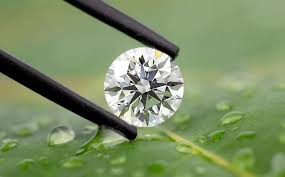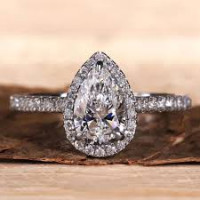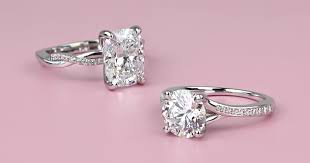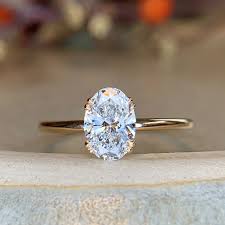Are lab-grown diamonds more affordable than natural diamonds?

Strong 8k brings an ultra-HD IPTV experience to your living room and your pocket.
The diamond industry has evolved significantly with the advent of lab-grown diamonds. These diamonds are crafted in controlled environments and share the same physical and chemical properties as natural diamonds. As a result, distinguishing between lab-grown and natural diamonds can be challenging. This comprehensive guide will explore various methods and techniques used to differentiate between these two types of diamonds.
Understanding the Basics: Lab-Grown vs. Natural Diamonds
Before delving into the methods of distinguishing between lab-grown and natural diamonds, it’s important to understand what makes them different:
- Lab-Grown Diamonds: Created in a laboratory using advanced technology to replicate the natural diamond formation process. Common methods include High Pressure High Temperature (HPHT) and Chemical Vapor Deposition (CVD).
- Natural Diamonds: Formed over millions of years under the Earth’s surface through natural geological processes.
While both types of diamonds are chemically identical, their origins and formation processes differ.
## Methods to Distinguish Lab-Grown Diamonds from Natural Diamonds
1. Gemological Testing
#A. Spectroscopy
Spectroscopy is one of the most effective ways to differentiate between lab-grown and natural diamonds.
- UV-Visible Spectroscopy: This method measures how diamonds absorb and emit light. Lab-grown diamonds often show different absorption features compared to natural diamonds.
- Infrared Spectroscopy: Natural diamonds and lab-grown diamonds can exhibit different patterns in infrared spectra. Natural diamonds may show nitrogen-related absorption bands that lab-grown diamonds lack.
Example: Spectroscopic analysis might reveal that lab-grown diamonds typically exhibit a "Nitrogen Aggregation Pattern" which is different from the natural diamonds' nitrogen-related features.
#B. Fluorescence Under UV Light
- Natural Diamonds: They may exhibit a range of fluorescence colors under UV light, such as blue or yellow.
- Lab-Grown Diamonds: They often show different fluorescence patterns or colors. For example, many CVD diamonds exhibit weak or no fluorescence.
Example: A natural diamond might fluoresce a strong blue under UV light, whereas a lab-grown diamond may not fluoresce at all.
2. Inclusions and Blemishes
#A. Inclusions Analysis
- Natural Diamonds: May have inclusions such as natural diamonds or gas bubbles.
- Lab-Grown Diamonds: Often have distinct inclusions related to the growth process. HPHT diamonds might show metallic inclusions, while CVD diamonds may have unique growth patterns or surface features.
Example: Lab-grown diamonds might display "Pinpoint Inclusions" that are different from the typical inclusions found in natural diamonds.
#B. Internal Features
Using a gemological microscope, gemologists can look for specific internal features.
- Natural Diamonds: May have natural inclusions like clouds, or feathers.
- Lab-Grown Diamonds: May exhibit features such as metallic inclusions from the HPHT process or distinctive growth patterns from the CVD process.
Example: HPHT diamonds might have "Metallic Flux Inclusions" while CVD diamonds could show "Needle-like Crystals".
3. Diamond Certification
#A. Certification Documents
The easiest way to distinguish between lab-grown and natural diamonds is to check the certification provided with the diamond.
- Lab-Grown Diamonds: Certificates will explicitly state that the diamond is lab-grown and will often provide details about the growth method used.
- Natural Diamonds: Certificates will indicate that the diamond is natural and include details about its origin and characteristics.
Example: A lab-grown diamond certificate from GIA (Gemological Institute of America) will clearly label the diamond as “Laboratory-Grown.”
4. Laser Inscription
Many lab-grown diamonds are laser-inscribed with a unique identification number that denotes their lab-grown status.
- Lab-Grown Diamonds: Look for inscriptions like “LAB GROWN” or “CVD” on the girdle of the diamond.
- Natural Diamonds: Typically have no such inscriptions unless specially marked.
Example: Ritani lab-grown diamonds often have "Lab Grown" engraved on the girdle, which can be identified with a magnifying loupe.
5. Advanced Detection Technologies
Several sophisticated technologies are used by gemologists and diamond dealers to identify lab-grown diamonds.
#A. DiamondView
A high-tech tool that uses UV light to produce images of diamond growth structures.
- Lab-Grown Diamonds: Show distinct growth patterns under the DiamondView.
- Natural Diamonds: Exhibit natural crystal growth patterns that differ from lab-grown diamonds.
Example: A DiamondView might reveal "Distinct Growth Patterns" in lab-grown diamonds.
#B. Phosphorescence Testing
- Lab-Grown Diamonds: Typically exhibit different phosphorescence compared to natural diamonds.
- Natural Diamonds: Phosphorescence might be more pronounced or exhibit different spectral colors.
Example: A natural diamond might show a distinct "Afterglow" under UV light, which is less common in lab-grown diamonds.
## Why It Matters: Knowing the Difference
Understanding how to distinguish between lab-grown and natural diamonds is crucial for:
- Informed Purchasing Decisions: Ensures that buyers get what they expect.
- Valuation and Appraisal: Affects the value and insurance of the diamond.
- Ethical Considerations: Helps consumers choose diamonds that align with their values.
## Frequently Asked Questions (FAQs)
1. How can a gemologist tell if a diamond is lab-grown or natural?
A gemologist uses various tests, including spectroscopy, fluorescence under UV light, and microscopic analysis of inclusions to determine whether a diamond is lab-grown or natural.
2. Can I distinguish between lab-grown and natural diamonds without professional help?
It is challenging to distinguish between lab-grown and natural diamonds without professional tools and expertise. The most reliable way to tell the difference is by obtaining a certification from a reputable gemological laboratory.
3. Are lab-grown diamonds more affordable than natural diamonds?
Yes, lab-grown diamonds are generally more affordable than natural diamonds. This is due to the controlled production environment and the absence of extensive mining operations.
4. Are there any visible differences between lab-grown and natural diamonds?
To the naked eye, lab-grown and natural diamonds can appear identical. Differences are usually found through professional gemological tests and certifications.
5. Is it possible to use the same grading criteria for lab-grown and natural diamonds?
Yes, lab-grown and natural diamonds are graded using the same criteria: the 4 Cs—Cut, Color, Clarity, and Carat Weight. However, lab-grown diamonds might exhibit different characteristics based on their creation process.
## Conclusion
Distinguishing between lab-grown and natural diamonds involves a combination of gemological tests, certifications, and advanced technologies. While the physical and chemical properties of both types of diamonds are identical, their origins and certain features can reveal their differences.
Note: IndiBlogHub features both user-submitted and editorial content. We do not verify third-party contributions. Read our Disclaimer and Privacy Policyfor details.





